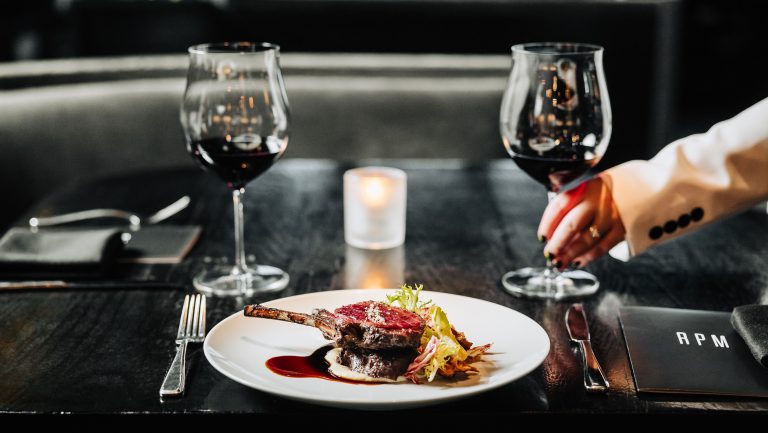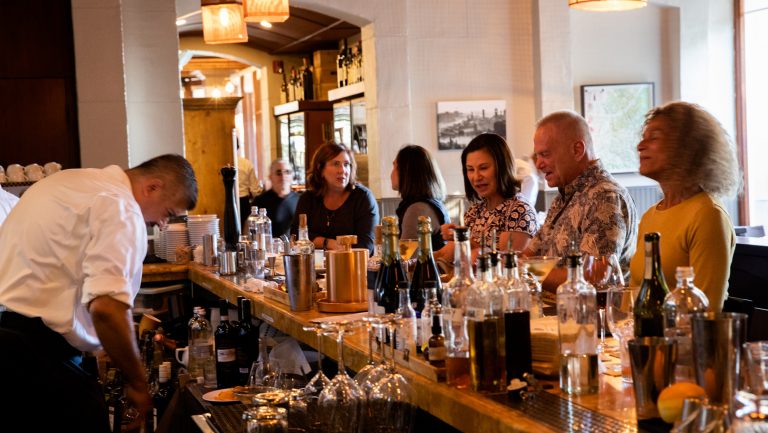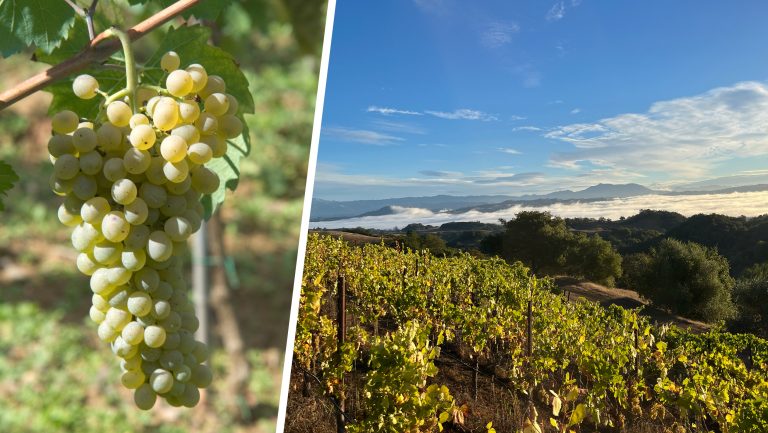Piedmont, Italy, has long been a bastion of obscure liquid treasures. Within its fog-shrouded hills, many producers take the long view on a slow life, seeking to preserve traditions that would be crowded out by heavy financial hitters elsewhere. Though the value of Nebbiolo from Barolo and Barbaresco has risked edging out heritage varieties, a few quality-minded producers have saved grapes from the cold hand of capitalism. Pelaverga is one such variety.
“Pelaverga compares to Italy’s other great obscurities,” says Nicholas Schulman, the wine director for RPM Italian Restaurants in Washington, D.C., Chicago, and Las Vegas. “Like Ruché or Schioppettino, Verduno Pelaverga offers exotic spice, ethereal complexity, highly aromatic floral notes, and a sense of freshness often missing from the better-known, classic Italian wines.”
Pelaverga flew under the radar of U.S. drinkers until a few years ago when importers, buyers, and sommeliers, reading the shifting winds of consumer preference towards lighter, aromatic, chillable reds, started seeking it out. Today, Pelaverga has become a niche wine for insiders, with a reputation that continues to rise. Ironically, the demand that has helped to protect it is now proving a double-edged sword in sourcing it.

Don’t miss the latest drinks industry news and insights. Sign up for our award-winning newsletters and get insider intel, resources, and trends delivered to your inbox every week.
A Tale of Two Pelavergas
Pelaverga grows in two areas in the Cuneo province: Verduno and in the hills of Saluzzo, or Colline Saluzzesi. Though the exact origins of the vines in each area are unclear, local producers long believed them to share a common origin. Research in the 1980s, however, revealed each village grew a separate cultivar: Pelaverga Grosso in Saluzzo, and Pelaverga Piccolo in Verduno.
Pelaverga Grosso, found in the Colline Saluzzesi DOC, produces a richer, more concentrated style. Created in 1996, this relatively unknown DOC focuses on red wines made from Nebbiolo, Barbera, and three other oddities playing accompaniment, including Pelaverga. Though seldom indulged, the rules allow producers to bottle a monovarietal Pelaverga.
Donato Scotti, originally from Bergamo and now the chef and owner of Donato Enoteca and Cru in Redwood City, California, has discovered a few Colline Saluzzesi wines that merit interest. High-toned with floral and pepper notes, Scotti found the Pelaverga Grosso from Cascina Melognis “beautiful,” leading him to include it in several wine club offers.
But it’s Pelaverga Piccolo that has garnered even greater attention in Verduno, where the village’s namesake DOC requires at least 85 percent of the variety. The wines run lighter, floral, and fragrant with a strawberry scent evocative of delicate Pinot Noir. Commercial interest has favored Piccolo, partly because of the quality-minded producers who have spearheaded its preservation, including G.B. Burlotto, Castello di Verduno, Fratelli Alessandria, and Olek Bondonio.

A diminutive area at just over 74 acres in total, Verduno Pelaverga DOC has little room for expansion. The DOC covers the village of Verduno and small sections in Roddi (9.7 acres) and La Morra (4 acres). Total production in 2022 reached 17,000 bottles.
The village of Verduno lies two miles from the northern edge of Barolo and the hilltop village of La Morra. Interest in the grape grew after Gabriella Burlotto of Castello di Verduno planted the first vineyard dedicated to the grape in her family’s Massara vineyard in 1972. That decisive act relieved Pelaverga from its prior duties as a background blending grape and helped it become a monovarietal star.
Pelaverga’s Rise in the United States
Nobody can pinpoint the exact moment when Pelaverga rose in popularity in the U.S., but one could hazard a guess that it started around 10 to 15 years ago.
“I’d say around 2010, Pelaverga began to garner increasing recognition within the sommelier community and among restaurateurs,” says Schulman. In 2006, Eric Asimov spotlighted Castello di Verduno’s Pelaverga as a pairing for Thanksgiving turkey in The New York Times, when the wine cost just $13.
“This move echoed the paper’s earlier influence in popularizing Beaujolais for the same occasion,” says Schulman. Like cru Beaujolais, Jura, and even the under-the-radar Loire Valley Pineau d’Aunis, Pelaverga’s ascent has been propelled by the “Jura effect,” when consumers who have been priced out of wines like Burgundy and Barolo turn to flavorful, complex, terroir-driven alternatives.
Scotti first fell in love with Pelaverga at a Burlotto tasting with the winemaker. “At the time, 10 to 12 years ago, it was pretty unknown,” he says. Scotti was there to taste and purchase Barolo, but decided to return with a few bottles of Pelaverga for the restaurant.
“We started featuring it by the glass and got a great response from customers,” he says. As Burlotto earned higher and higher scores for its Barolo, the price “skyrocketed,” forcing sommeliers to seek alternatives. “That’s when Pelaverga started appearing on menus,” says Scotti.
To that point, the cost-to-value ratio of Pelaverga remains alluring. The current Castello di Verduno ‘Basadone’ vintage fetches around $25 to $30 retail, while G.B. Burlotto Verduno Pelaverga ranges between $30 and $35.

“I remember celebrating a special occasion at a Michelin two-star in 2019, and I had trouble finding a reputable, ready-to-drink Nebbiolo or Burgundy for less than $300. I finally came across a ’16 Pelaverga by Burlotto for under $100, and it was perfect,” says Schulman.
Along with its value proposition, sommeliers love Pelaverga for its stylistic versatility; it can make lighter or fuller reds, along with sparkling and even white wines. “Pelaverga is a Zelig of a variety,” says Schulman.
Strong Demand for a Niche Grape
Morgan Rich, the Italian portfolio manager at Polaner Selections, handles imports for Castello di Verduno. He sells to many of New York and New Jersey’s top restaurants and retail shops, which eagerly anticipate their shipments. “Many of our customers know the wine and await its arrival. Nowadays, we can only secure enough to last us about half of the year,” he says.
Skyrocketing demand and limited production of G.B. Burlotto’s wines leave Scotti struggling to keep it in stock. “Due to its cult status, most bottles are spoken for. We are lucky to receive some yearly allocation,” he says.
Schulman isn’t surprised. “Without the hefty price tag of neighboring classics Barolo and Barbaresco, coupled with its light-bodied approachability, it’s no coincidence that retailers and restaurants now have difficulty keeping Pelaverga in stock, especially considering its limited production,” he says.
Though worldwide demand has helped producers inch prices higher, Marco Buttignol, the export director for Castello di Verduno, says they can only go so high in a region with strong competition from Langhe Nebbiolo, Dolcetto, and Barbera. “For sure, it’s a golden moment for Pelaverga, and all of its producers are just trying to ride the wave.”

Dispatch
Sign up for our award-winning newsletter
Don’t miss the latest drinks industry news and insights—delivered to your inbox every week.
Lauren Mowery‘s work can be found at laurenmowery.contently.com. When not studying for the Masters of Wine exam, she enjoys not studying for the Masters of Wine exam.






